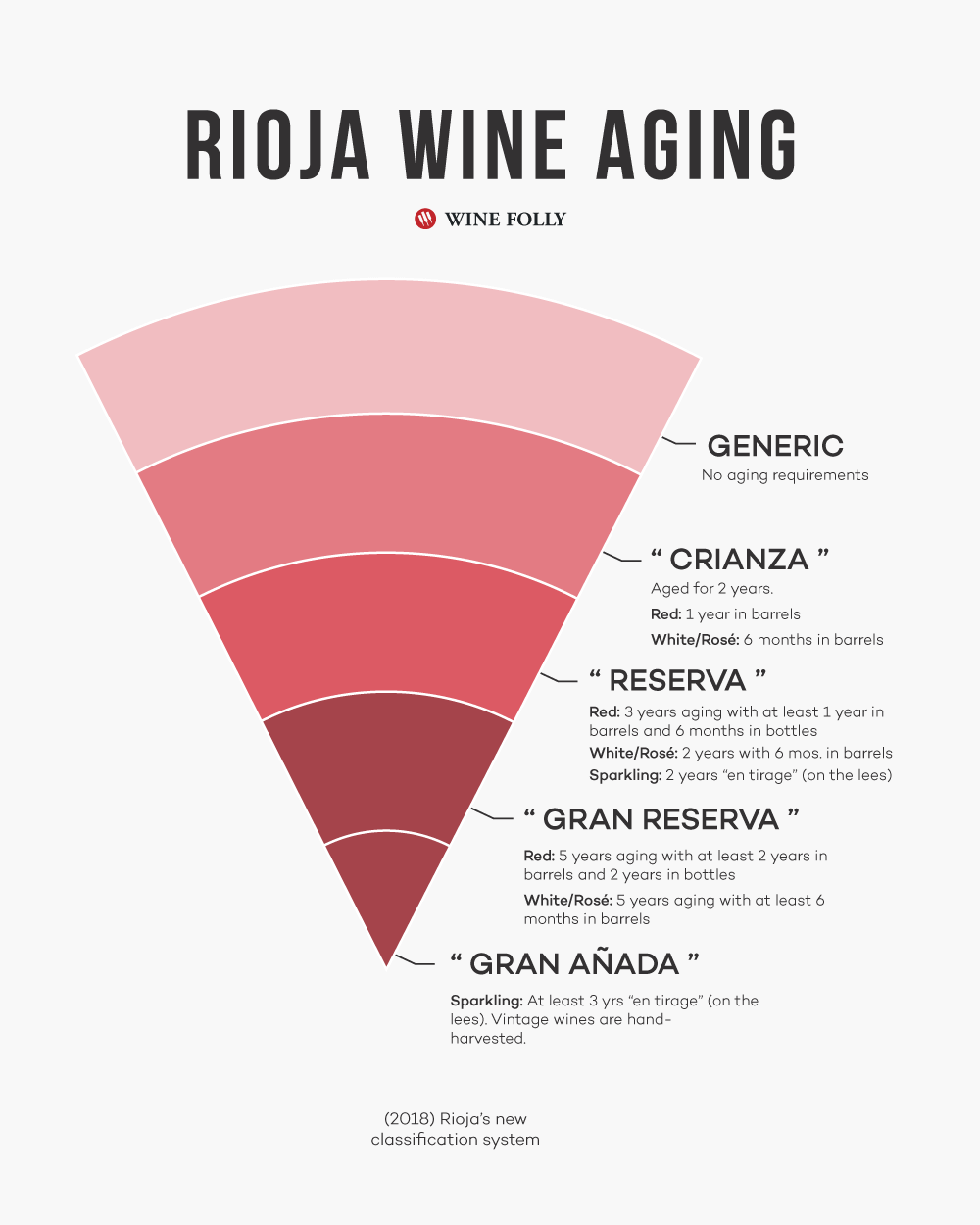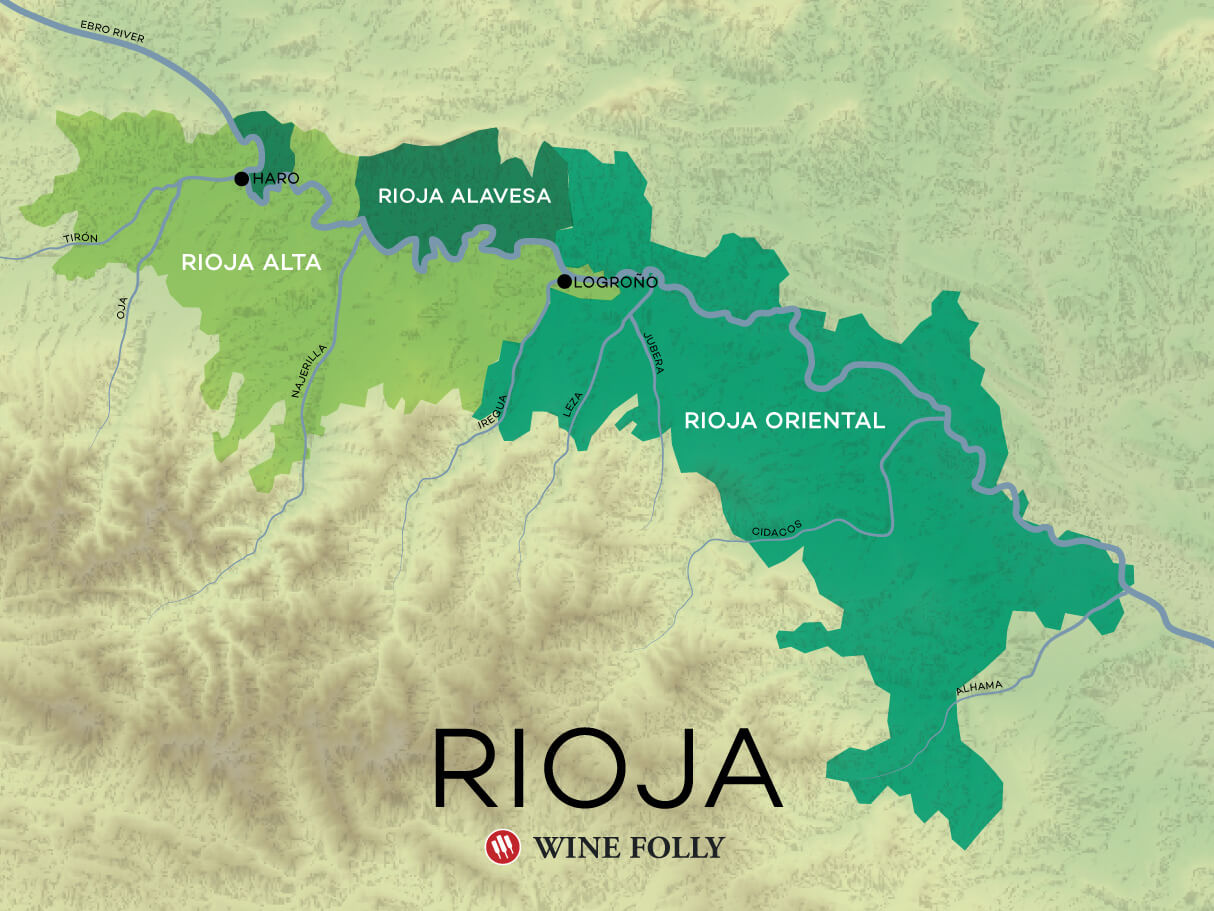Change in the wine world is slow going.
For example, most wine snobs still prefer corks even though screw caps have been proven successful for over 50 years. Also, did you know we still value Bordeaux wine based on a 160-year-old ruling?
So, when the Rioja Consejo Regulador (wine commission) introduced a new classification system in 2017, with further implementation in 2018, it marked a major shift. Several years later, the system is fully in place and shaping how we understand quality in Rioja.
Rioja Wine Classifications
Rioja’s classification system today emphasizes origin, highlighting regional microclimates and single vineyards, rather than relying solely on oak aging as a quality marker.
The system aligns with appellation-focused regions like Burgundy, where geography plays a key role in defining wine character.

Quick Facts on Rioja Wine Rules
- Rioja can be labeled by its three official zones: Rioja Alta, Rioja Alavesa, and Rioja Oriental (aka Eastern Rioja – originally called Rioja Baja).
- The Rioja aging classification includes generic, Crianza, Reserva, and Gran Reserva, but there is also Gran Añada, which is for sparkling wine.
- Rioja wines can list the village or municipality on the front label. That said, don’t try to memorize all the municipio names – there are 144 in Rioja!
- Rosé (aka “rosado“) wines can come in a wide range of pink hues. Previously, only lighter styles were allowed.
- Rioja includes a sparkling wine designation called Espumosos de Calidad de Rioja (with similarities to Champagne!)
- Winemakers may offer single-varietal white wines under the Rioja Blanco label.

Rioja Aging Classifications
Generic Rioja (aka “Joven”)
Generic Rioja wines do not have aging requirements. Expect these wines to use minimal oak-aging and have a fleshy style. In the past, this was Rioja’s lowest quality designation.
In recent years, more producers have embraced this category to produce exceptional wines (especially Rioja Blanco made with Viura) using this aging regime.
Crianza Rioja
Crianza (“kree-ahn-tha”) was formerly where quality started for Rioja wine. The increased aging allows Tempranillo-based wines to develop more complexity; expect red fruit flavors and subtle spice.
- Red wines: Aged for a total of two years with at least one year in oak barrels.
- White and rosé wines: Aged for a total of two years with at least six months in barrels.
Reserva Rioja
Reserva is where things start to get serious with Rioja. The Reserva level exists for still wines, while sparkling wines fall under their own quality tier: Espumosos de Calidad de Rioja.
Red wines in this classification typically have fantastic balance between fruit and structure (e.g. tannin and acidity), with subtle aged flavors of baking spice and dried fruit. This is a bottle worth cellaring to see how it evolves over time.
- Red wines: Aged for a total of three years with at least one year in oak barrels and at least six months in bottles.
- White and rosé wines: Aged for a total of two years with at least six months in barrels.
- Sparkling wines: Wines must be aged “en tirage” (on the lees) for no less than 24 months. Vintage-dated espumosos must be hand-harvested.
Gran Reserva Rioja
- Red wines: Aged for a total of five years with at least two years in oak barrels and two years in bottles.
- White and rosé wines: Aged for a total of five years with at least six months in barrels.
Gran Añada Rioja
Gran Añada, once a nearly forgotten term, is now a celebrated category for vintage sparkling wines in Rioja.
By the numbers, these wines mimic the production methods and aging requirements of vintage Champagne.
- Sparkling: Wines must age “en tirage” (on the lees) for no less than 36 months. Vintage-specific espumosos must be hand-harvested.

Regional Labeling for Rioja
The regional labeling system, now fully adopted, represents one of the most transformative updates to Rioja’s wine laws in decades.
If you travel through Rioja, you cannot deny that there are a myriad of soils and microclimates. Now that producers can officially notate a singular vineyard, excitement about the region among collectors has increased.
Rioja
You can assume that all wines labeled “Rioja” are a blend of grapes from all over La Rioja.
Zonas (Zones)
The largest Zona is Rioja Oriental, followed by Rioja Alta, and then Rioja Alavesa. Most wine books will tell you that Rioja Alta and Rioja Alavesa make the best wines, but that’s not always true.
If you’re a fan of richer styles of Tempranillo, you’ll love a few producers in Rioja Oriental (for example, check out Ontañon and Barón de Ley). One issue with Rioja Oriental’s reputation is that a sizable proportion of its production is bulk wine.
Rioja Alta and Rioja Alavesa wines tend to be more mineral and elegant. Many of these wines have the structure to age 20 or more years.

Vino de Pueblo (Municipalities)
As of 2024, the official terminology for wines labeled by village origin is “Vino de Pueblo,” replacing the earlier term “Vino de Municipio.” This designation highlights the wine’s connection to a specific village and brings Rioja in line with global regional labeling practices.
Rioja can now label wines after the village or municipal area where the grapes grow. If a vineyard straddles two municipalities, it can blend up to 15% of the neighboring village’s grapes into the wine.
One problem with this regulation is that there are so many, with standouts being difficult to identify (or remember!) In Rioja, there are 144 municipalities.

Viñedo Singular (Unique Vineyards)
Viñedo Singular reminds us of lieu-dits (named vineyard sites) of Burgundy. For this classification, the producer must appeal to the Consejo Regulador to recognize a vineyard and allow its name on the label.
Beginning in 2024, producers can label wines with both the name of a specific vineyard and the village where it’s located using the format “Viñedo en [Village Name].”
This added specificity helps consumers understand the precise origin of the wine, an important shift toward increased transparency and terroir expression.
On one hand, Viñedo Singular is really cool because we learn the names of places where special vines grow. On the other hand, if you know Burgundy, you know there are well over one thousand lieu-dits. Viñedo Singular will make this region more complex, yet also more challenging to understand.
As of 2023, 148 officially recognized Viñedo Singular sites in Rioja cover approximately 246 hectares. This number continues to grow as producers seek recognition for exceptional vineyard parcels.
Rioja’s commitment to site-specific wines has become a cornerstone of its identity, helping reshape the global perception of the region as both historic and forward-thinking.